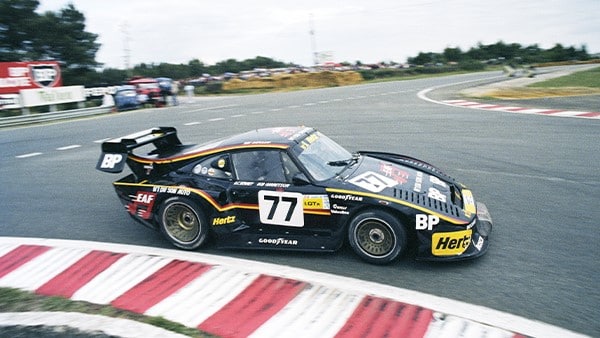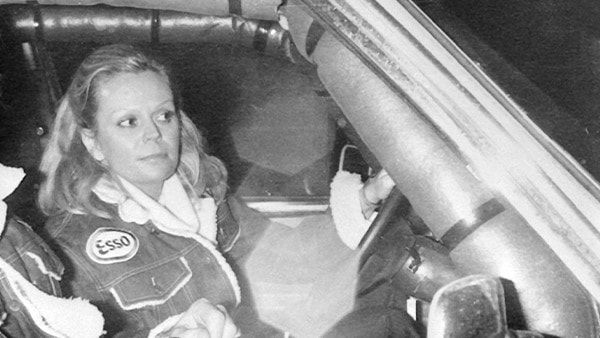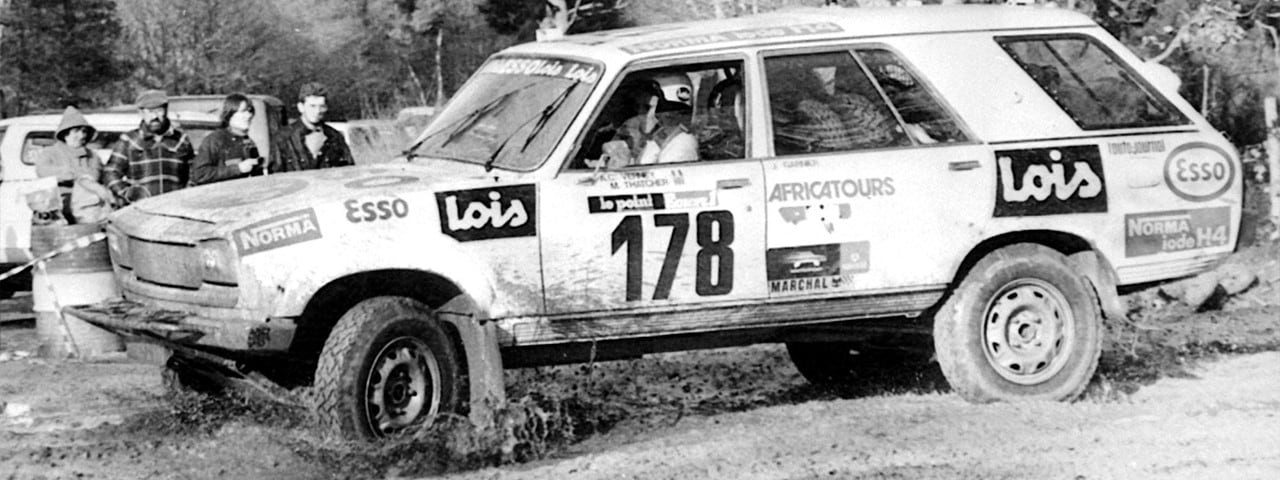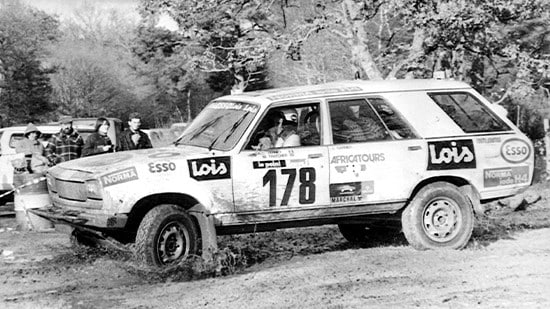The queen of Le Mans
With 10 Grands Prix to her name, no woman has driven the arduous 24 Hours of Le Mans more than Anny-Charlotte Verney.
Having been born in Le Mans, you might expect Anny-Charlotte Verney to have perhaps attended the famous 24-hour race at some point in her 78 years and especially so since her grandfather, Louis, was one of its initiators back in 1923. But she has gone further than that; she holds the record for the highest number of participations by a woman.
Between 1974 and 1983, Charlotte (as she prefers to be called) raced at Le Mans 10 times and went on to do even more. We chatted through the highlights of her racing career at her Biarritz residence, where today she’s a local dignitary.
Formation laps
Charlotte first got into motorsport with a Formule Bleu single-seater Citroën. “When I had a race, I would practise on Friday and learn the circuit,” she explains. “At the beginning, I spun a lot. But it was a good school to learn in and it gave you a strong character because, when you are the only woman racing with 25 men, you have to show them you are not going to let them pass in the first corner.
“In October 1972, I received a proposition from Bob Neyret’s Aseptogyl team. I was not very happy because it was an all-women’s team, with some other well-known women drivers, but I accepted.
“A rally season was something new for me. I started with the Rallye Neige et Glace in March, and it was the first time I raced on ice. In September, I raced in the Tour Auto with a supercar, an Alpine A110 1800 Group 4, tuned by Mignotet. It was a really good car, but I had an accident on the last stage after my co-driver made a mistake reading the roadbook and we went into a ravine. After that, I decided I preferred the circuits.
“Nonetheless, soon after I drove my first African rally – ‘Le Bandama’ – in the Cote d’Ivoire and had a very serious accident. I wasn’t driving, I let my co-driver (Christine Dacremont) drive for an hour because the rally was for four days and nights, but she went off the road. The hospital sent my parents a message saying that I was in a desperate state, so they got me out… otherwise I would still be there.


A Le (wo)Mans world
Unshaken, Charlotte’s first Le Mans was in 1974. “I decided to stay in circuit racing and had to find a sponsor, because I never wanted to ask for money from my parents. For the first time, I raced as a professional with a factory Porsche, but still hadn’t told my parents. They discovered on the Monday before the race in the newspaper Le Maine Libre and it was the first time I saw my father afraid. On the start line that Saturday, he came over and said: ‘If it goes too fast for you, please stop’ and I just answered: ‘Yes Dad, I will put on the turn signal and stop at the end of the straight.’ I did well in the first three laps and finished 13th.”
By now, Charlotte was being offered some very serious machinery but, in 1977, she decided to drive her own Carrera 3.0 RS 911. “The mechanics had to take the engine out to change the gearbox, so we were very delayed. The next year, 1978, we again had gearbox problems, but we still finished 12th overall.
“For 1979, I was wholly self-financed in a 934, but again we had a long delay, three hours in the pits while the gearbox got changed, and so my 934 was exchanged for a Kremer 935 K3 in 1980. I had moved the car up into fourth place by the 17th hour, then the actor Jean-Louis Trintignant went out and crashed it on his first lap. The car was too badly damaged to carry on.” Charlotte still huffs about this – she does not suffer fools gladly – and felt Trintignant’s sponsors pushed for him to get a drive when it was the wrong time to send out a novice.
Charlotte’s best Le Mans result was sixth overall the following year, again in a Porsche 935. “1983 was my last attempt in the Rondeau-Ford M482. Unfortunately, we retired but, for the record, my top speed on the Mulsanne Straight – Les Hunaudières – is 356kph (221mph).”
The Thatcher years
Her driving career was far from over, however, as a dip into the world of endurance rally raids included the arduous Paris-Dakar. Her co-driver in 1982 was Mark Thatcher, the son of then-British Prime Minister Margaret Thatcher, and things did not go well.
“I met Mark during the 24-hours race in Le Mans in ’81, as we had the same sponsor. As we didn’t have any races in the winter, we decided to do the Paris-Dakar. So, in ’82, I was co-driving with the heir to the English Iron Lady, along with our mechanic Jacky Garnier in a Peugeot 505 Estate.
“We were in convoy with two other cars near the border between Mali and Algeria, and we stopped to repair a damaged rear axle. There was also a bent steering arm. Maybe because of the faulty steering, we managed to be 56km off the route. At that time, there were no cell phones or GPS, so you couldn’t contact anyone. Mark assured us his mum would send a satellite to find us. There were a lot of search planes and, in the end, after five days, it was the Algerian Air Force who found us. Back at the hotel, for the first and last time in my life, I saw a 35-year-old boy take a vigorous reprimand from his father.”
Undeterred, Charlotte returned to the Sahara on multiple occasions before competing in her last major circuit race at the 1990 Spa-Francorchamps 24-Hours. It goes without saying she is one gutsy lady.
Image credit: Alamy and Porsche

 With 10 Grands Prix to her name, no woman has driven the arduous 24 Hours of Le Mans more than Anny-Charlotte Verney.
With 10 Grands Prix to her name, no woman has driven the arduous 24 Hours of Le Mans more than Anny-Charlotte Verney.

